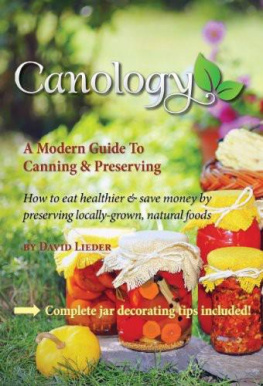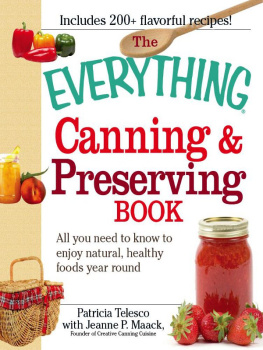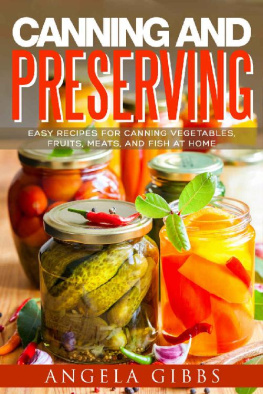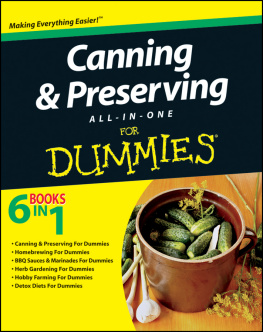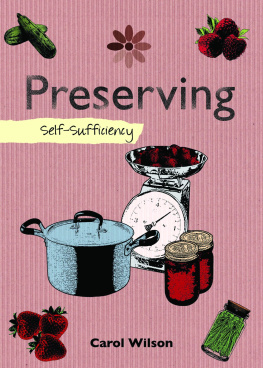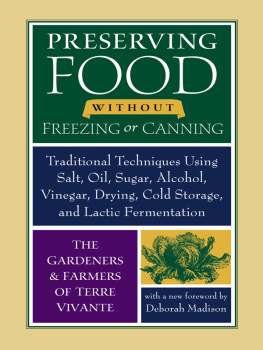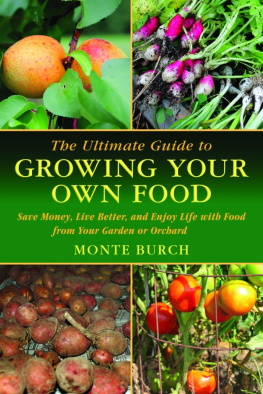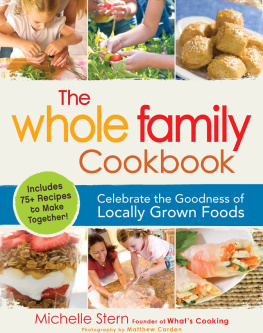Lieder - Canology: a Modern Guide: How to Eat Healthier & Save Money by Preserving Locally-Grown Natural Foods
Here you can read online Lieder - Canology: a Modern Guide: How to Eat Healthier & Save Money by Preserving Locally-Grown Natural Foods full text of the book (entire story) in english for free. Download pdf and epub, get meaning, cover and reviews about this ebook. year: 2013, publisher: Canology Publishing LLC, genre: Children. Description of the work, (preface) as well as reviews are available. Best literature library LitArk.com created for fans of good reading and offers a wide selection of genres:
Romance novel
Science fiction
Adventure
Detective
Science
History
Home and family
Prose
Art
Politics
Computer
Non-fiction
Religion
Business
Children
Humor
Choose a favorite category and find really read worthwhile books. Enjoy immersion in the world of imagination, feel the emotions of the characters or learn something new for yourself, make an fascinating discovery.
Canology: a Modern Guide: How to Eat Healthier & Save Money by Preserving Locally-Grown Natural Foods: summary, description and annotation
We offer to read an annotation, description, summary or preface (depends on what the author of the book "Canology: a Modern Guide: How to Eat Healthier & Save Money by Preserving Locally-Grown Natural Foods" wrote himself). If you haven't found the necessary information about the book — write in the comments, we will try to find it.
Over 100 photos!!
Preserving foods and eating locally-grown veggies and fruits is an exciting new trend.
In the book Canology - How To Eat Healthier & Save Money By Preserving Locally-Grown Natural Foods you will learn:
- Why preserving food will save you money on your familys grocery bill.
- How to preserve food the safe, natural way (without chemicals)
- What is canning (jarring foods)?
- How to preserve veggies, fruits, jams, salsas, sauces, soups, chili, applesauce, and many more cooking creations for use all-year round.
- Why natural veggies and fruits are better than store-bought chemically-grown foods
- How to find locally grown, healthy organic produce and fruits in your own community on a budget
- How to decorate your jars to use as gifts and in gift baskets.
I wrote this book because I know that locally-grown organic produce and fruitsare better tasting and healthier than commercial grocery foods, and local produce and fruitscan actually be lower cost if you buy it in season. A lot of people are getting excited about home gardening and small local farming, and canning and preserving of foods is a part of that trend. This book covers all the latest safety protocols straight from the scientists who know best and who have studied every aspect of preserving food in jars to make it safe for your family.
I also love the idea of decorating jars - which is why I puta detailed chapter on it. I have given gifts to others many times in the past that were these type of decorated foodjars and baskets. When I first started giving basket gifts I was buying them for about $100 from a local store, and with the tips Ive given in this book you can make these same high quality baskets forless thantendollars and brighten up somebodys day.
About the AuthorDavid Lieder is an investigative journalist, a novelist and an authority on many topics that he writes about in articles, blog posts and books. In addition, he is a long-time music composer/producer and a spiritual teacher. He studies history and international government as a hobby. He is involved in supporting meaningful charities and causes around the world.
Lieder: author's other books
Who wrote Canology: a Modern Guide: How to Eat Healthier & Save Money by Preserving Locally-Grown Natural Foods? Find out the surname, the name of the author of the book and a list of all author's works by series.

